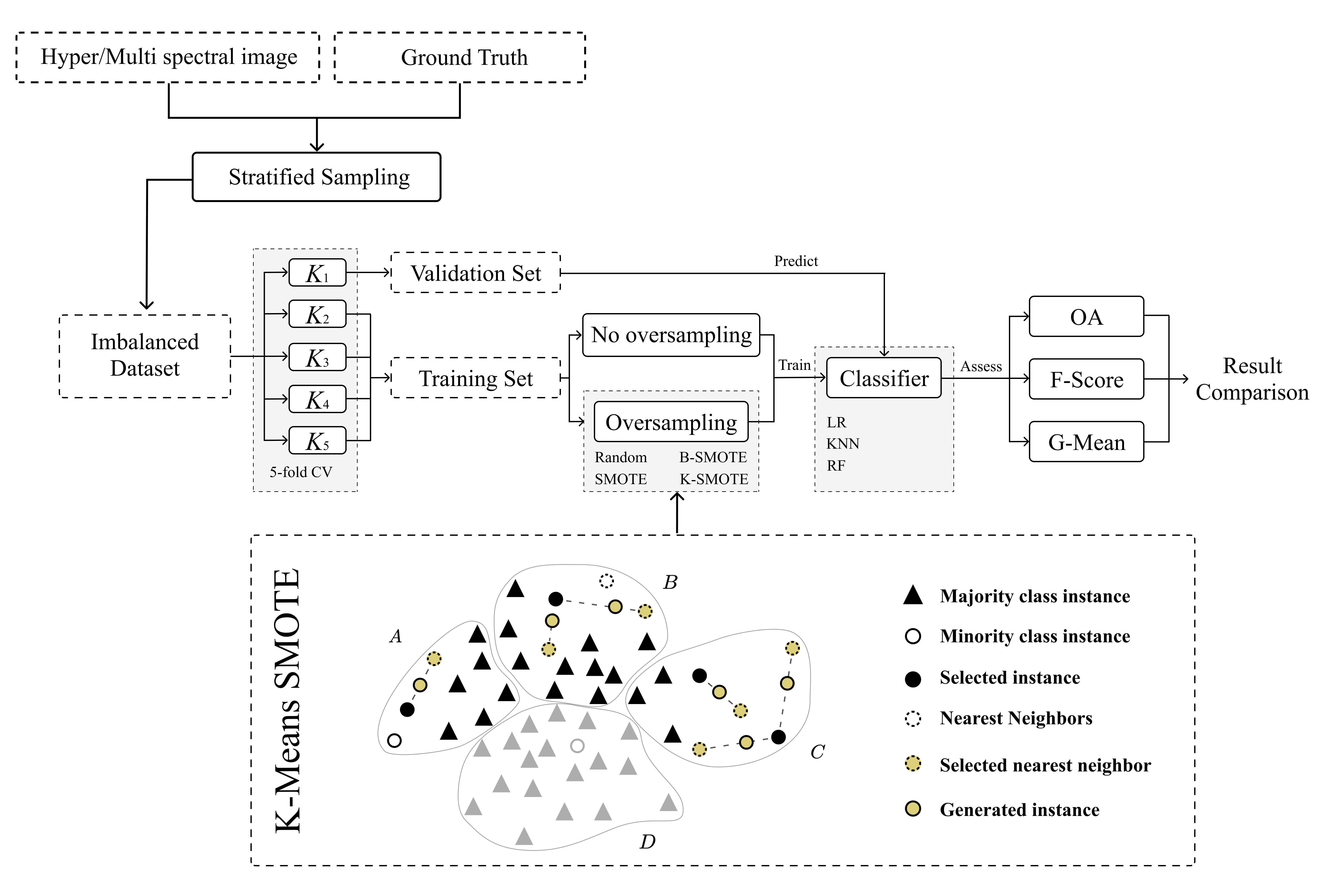Improving Imbalanced Land Cover Classification with K-means SMOTE: Detecting and Oversampling Distinctive Minority Spectral Signatures
Published in Information, 2021
Fonseca, J., Douzas, G., Bacao, F. (2021). Improving Imbalanced Land Cover Classification with K-Means SMOTE: Detecting and Oversampling Distinctive Minority Spectral Signatures. Information, 12(7), 266. https://doi.org/10.3390/info12070266
Abstract
Land cover maps are a critical tool to support informed policy development, planning, and resource management decisions. With significant upsides, the automatic production of Land Use/Land Cover maps has been a topic of interest for the remote sensing community for several years, but it is still fraught with technical challenges. One such challenge is the imbalanced nature of most remotely sensed data. The asymmetric class distribution impacts negatively the performance of classifiers and adds a new source of error to the production of these maps. In this paper, we address the imbalanced learning problem, by using K-means and the Synthetic Minority Oversampling TEchnique (SMOTE) as an improved oversampling algorithm. K-Means SMOTE improves the quality of newly created artificial data by addressing both the between-class imbalance, as traditional oversamplers do, but also the within-class imbalance, avoiding the generation of noisy data while effectively overcoming data imbalance. The performance of K-means SMOTE is compared to three popular oversampling methods (Random Oversampling, SMOTE and Borderline-SMOTE) using seven remote sensing benchmark datasets, three classifiers (Logistic Regression, K-Nearest Neighbors and Random Forest Classifier) and three evaluation metrics using a 5-fold cross-validation approach with 3 different initialization seeds. The statistical analysis of the results show that the proposed method consistently outperforms the remaining oversamplers producing higher quality land cover classifications. These results suggest that LULC data can benefit significantly from the use of more sophisticated oversamplers as spectral signatures for the same class can vary according to geographical distribution.
Graphical abstract is provided below:

